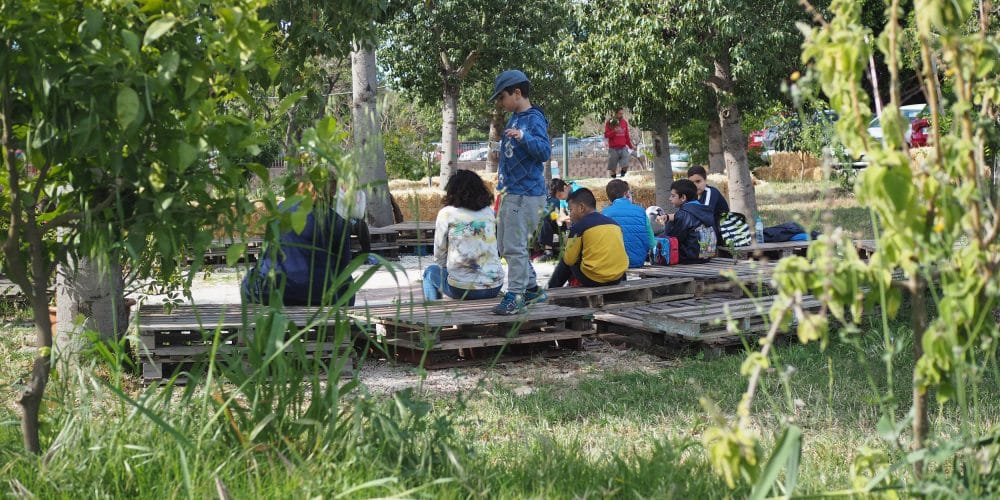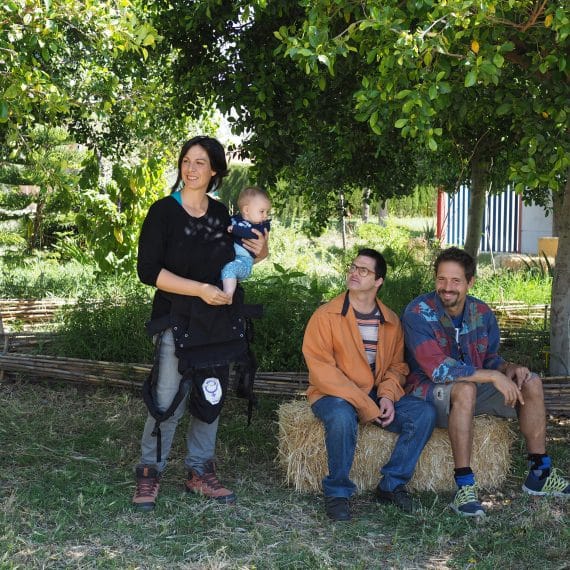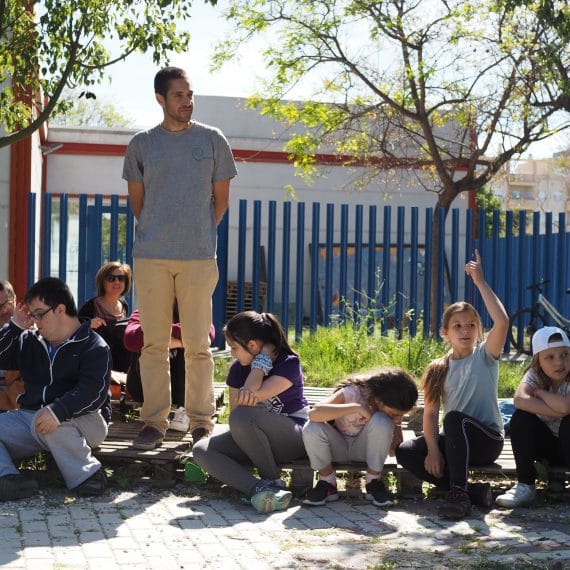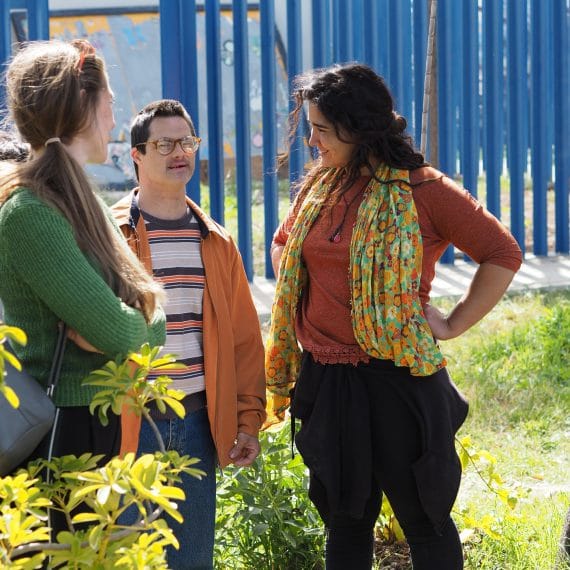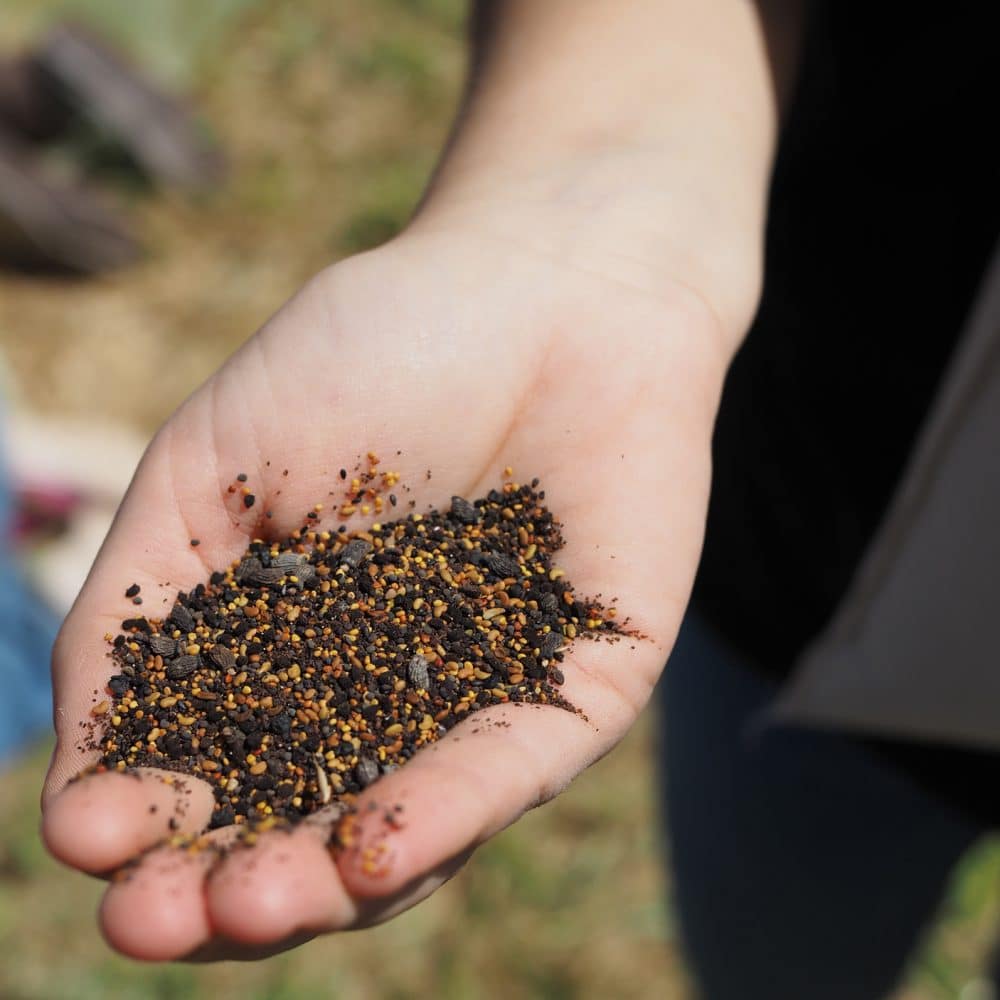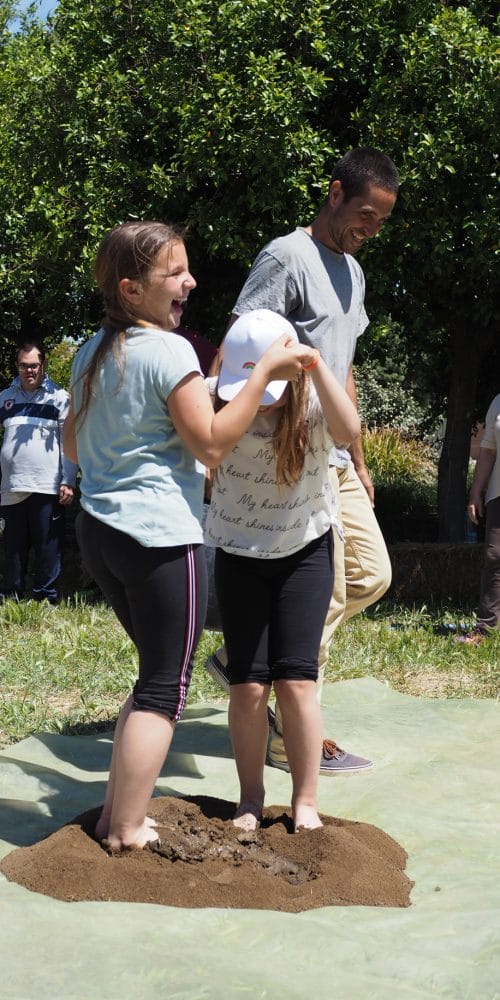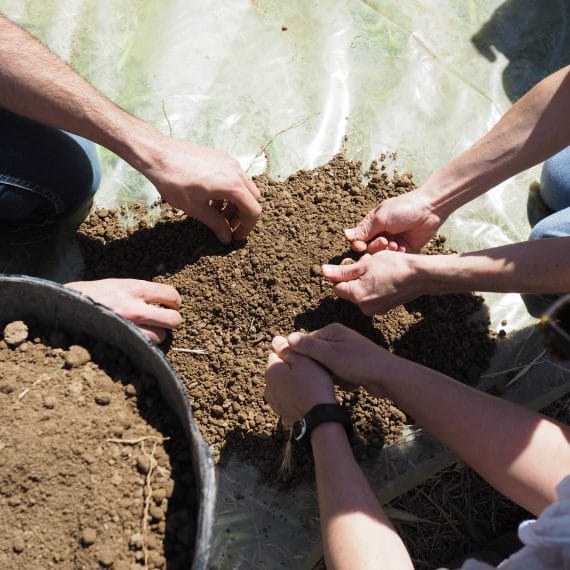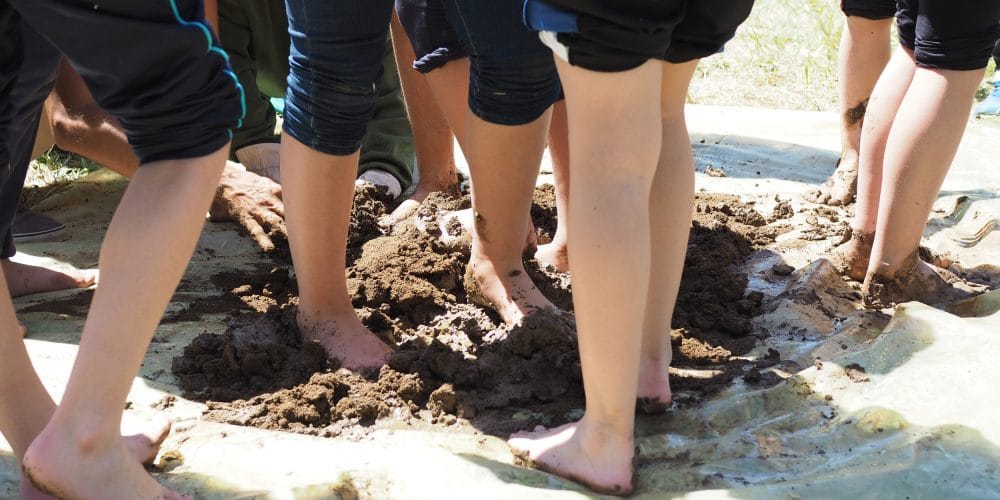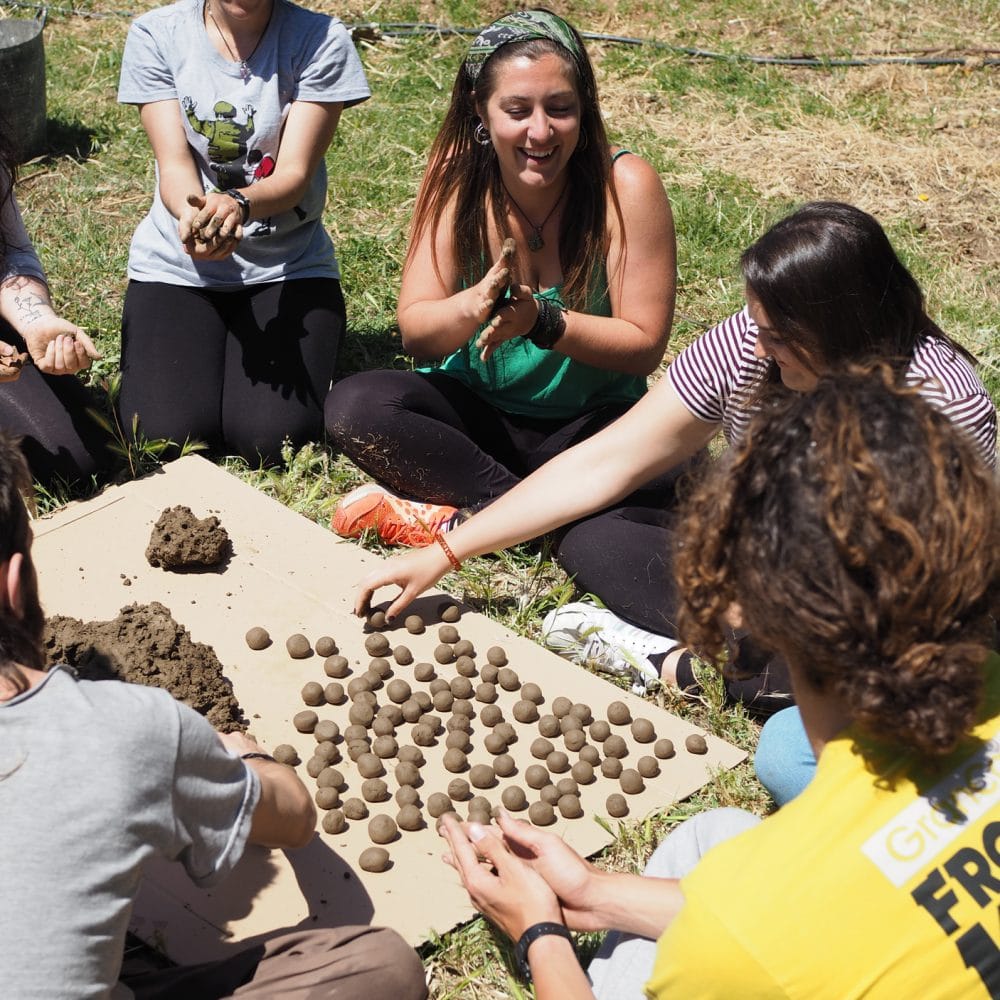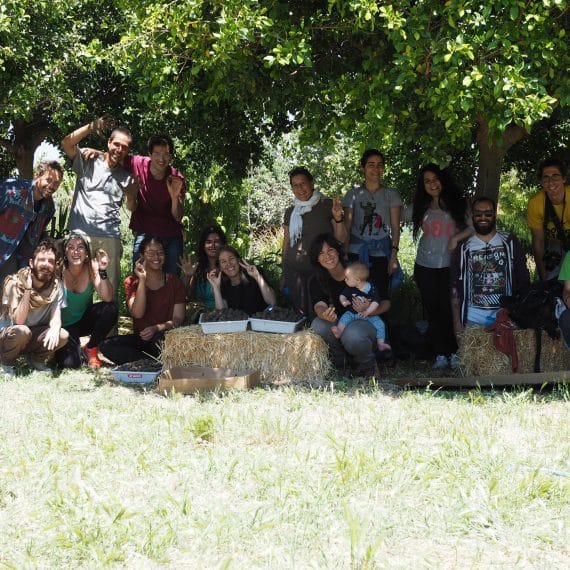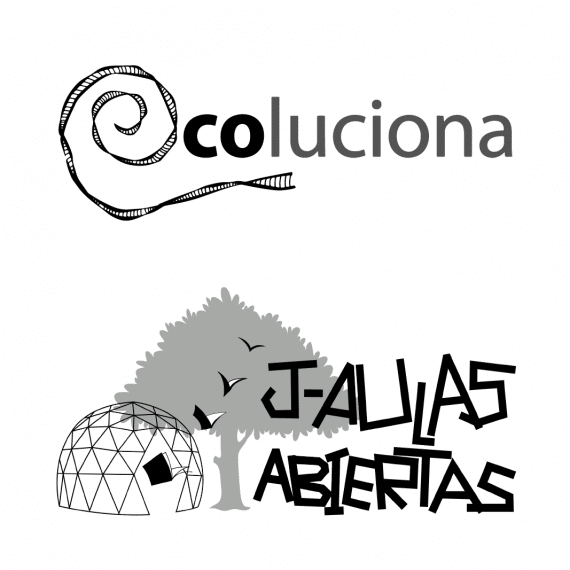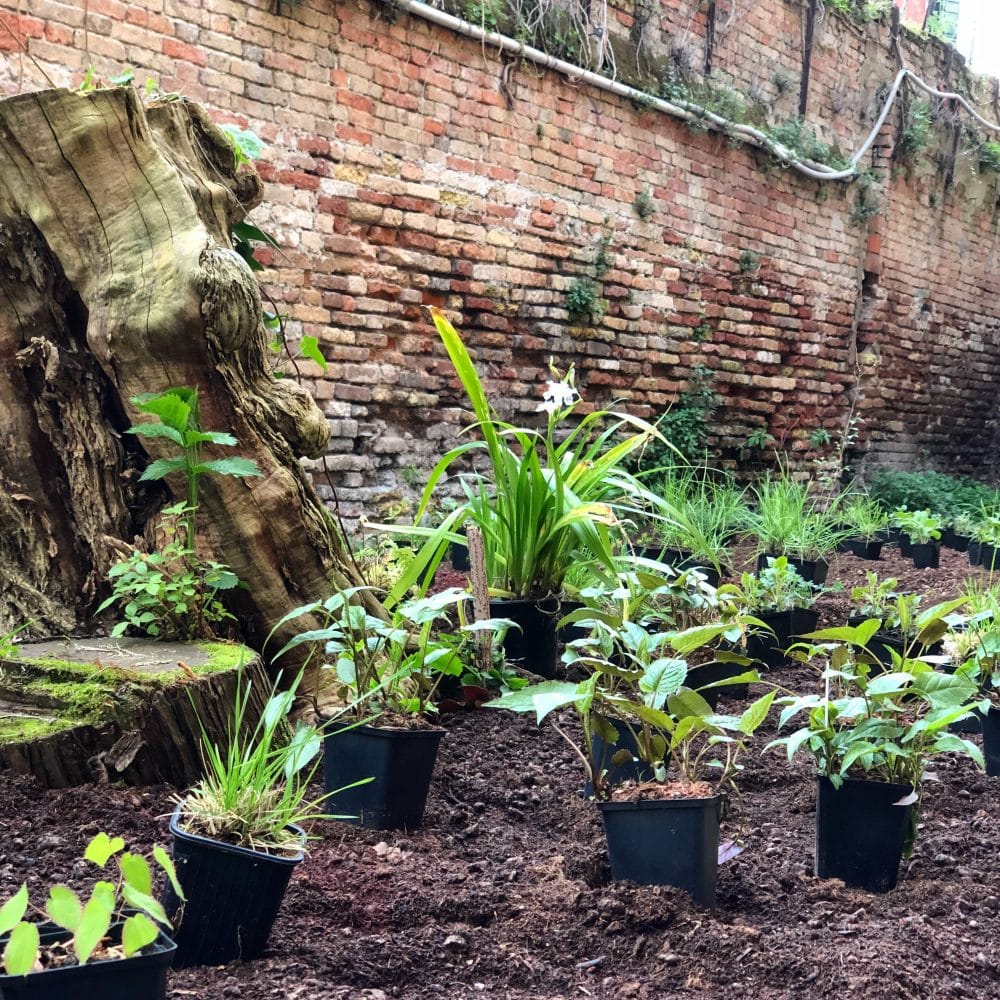
Este lugar, configurado ajeno a nuestras lógicas y pretensiones programáticas, tiene carácter marginal y se ha auto-constituido como jardín espontáneo.
Lejos de querer negar su carácter, o de superponer un discurso abstracto sobre otras características del espacio, creemos que la intervención ha de servir para potenciar el jardín en sí mismo.
Reivindicamos la re-programación de este espacio como acción colectiva. La experiencia de vivir un jardín ha de ir más allá de la mera contemplación. La verdadera percepción del jardín, de su ahora –y del nuestro–, sólo puede experimentarse a través de la acción.
Realizar una acción física, tangible, con la que pasemos a ser no solo observadores ajenos, sino parte del jardín, nos hace conscientes de que nuestras acciones individuales dejan huella, de que entre todos formamos el jardín colectivo.
La intervención planteada va más alla de esta Bienal. Entendemos el jardín como un proceso, no como un fin. Se trata de un diálogo entre el visitante y el jardín informal.
Desde el 26 de mayo al 25 de noviembre, este será el jardín temporal del Pabellón Español de la Bienal de Venecia. Durante estos meses, las acciones de todos insuflarán energía a este rincón olvidado.
Después, una vez concluida la Bienal, volveremos a abandonar este espacio. Pero el jardín que habremos transformado seguirá ahí, ajeno a nosotros y a nuestra mirada. Y seguirá funcionando bajo sus propias lógicas, moviéndose, transformándose, hasta que volvamos a posar en él nuestra mirada en la próxima Bienal. Entonces el jardín será distinto, habrá crecido y evolucionado. Seguirá siendo el jardín (in)temporal.
Development over time
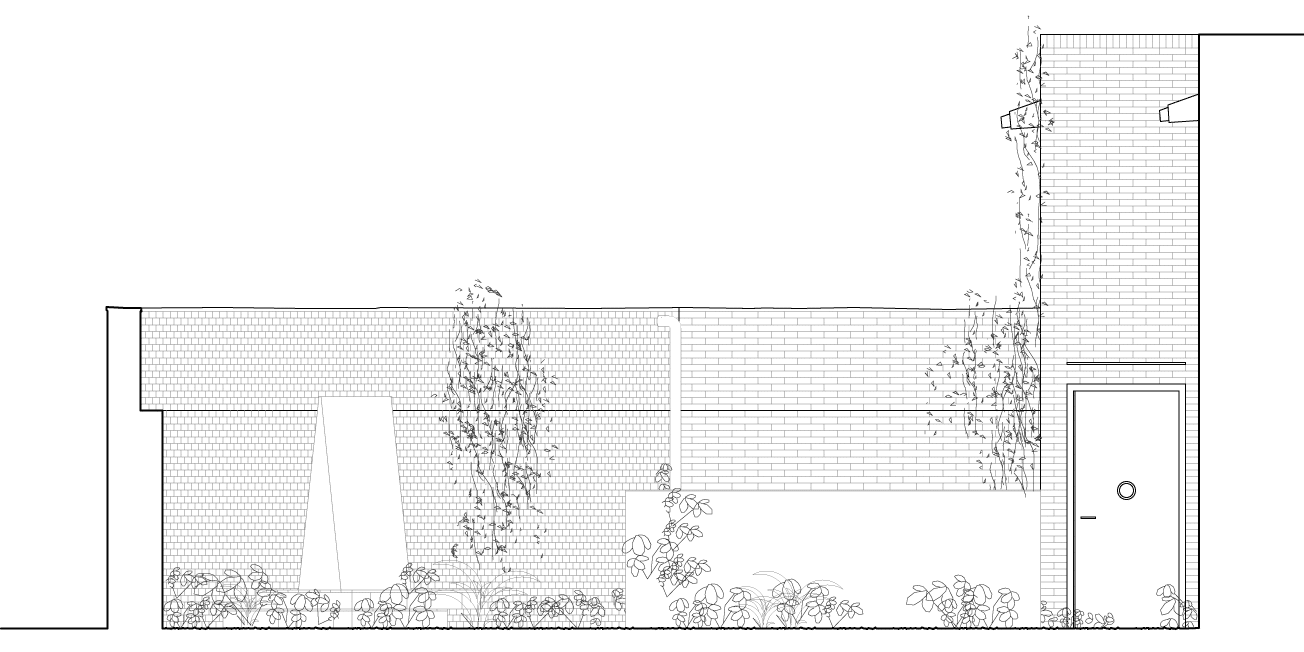
2017 (Initial conditions)
STAGE 0: ABANDONMENT
In its previous state, the abandoned backyard was full of useless and discarded objects that were left behind.
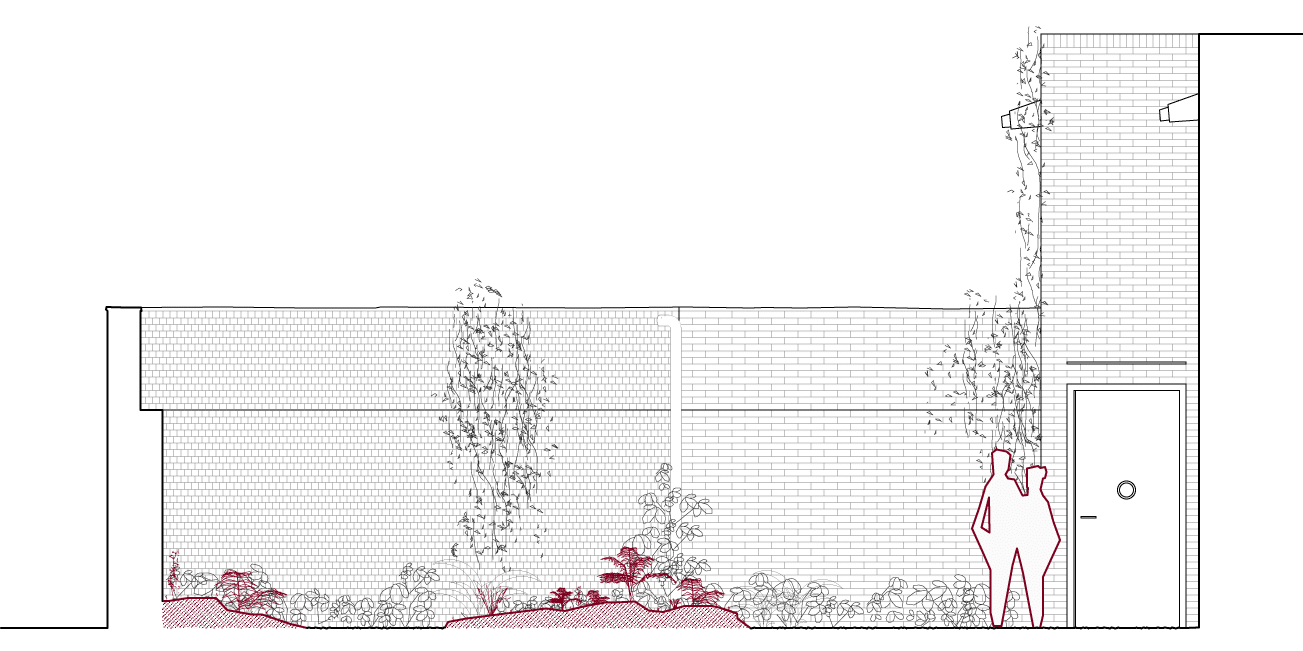
Apr. 2018:
STAGE 1: RESET
By recognising its marginal nature, we reset this unprogrammed spontaneous garden to its primary state: we clear and weed several zones, conserving the flora of interest, and adding a new substrate where more plants will be able to thrive.
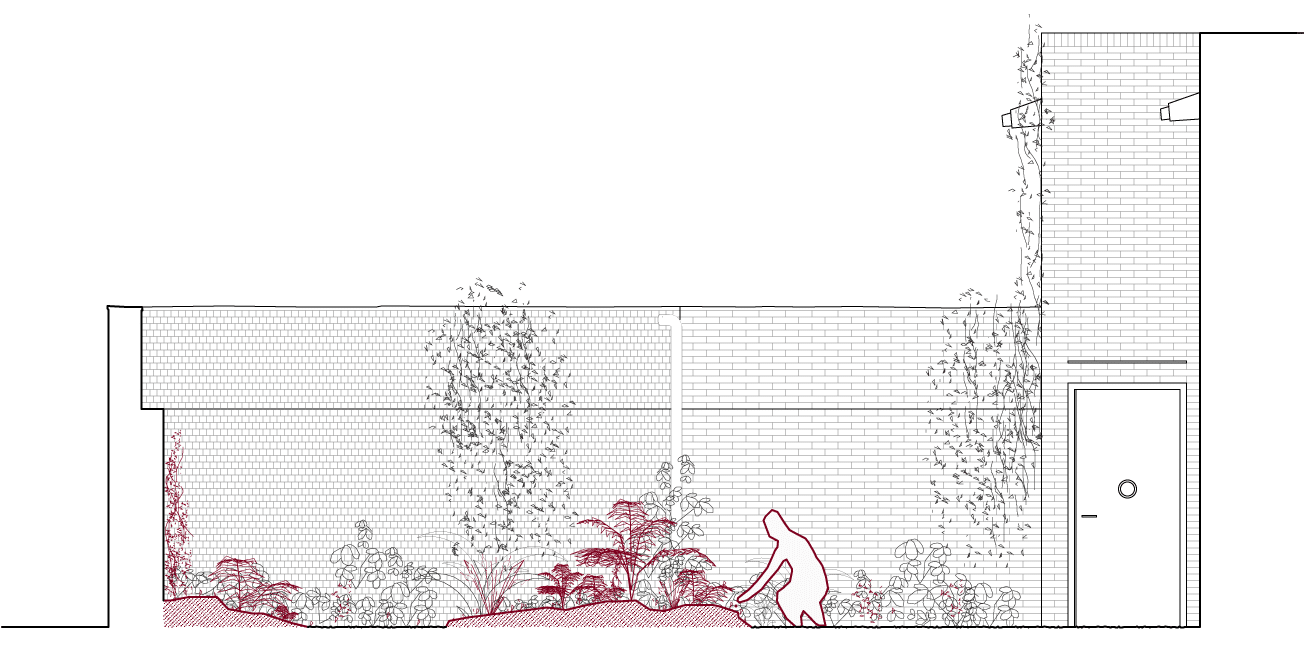
Apr. - Nov. 2018:
STAGE 2: BECOMING
During the Biennale, this abandoned backyard will no longer be a forgotten space. It will welcome all the visitors, inviting them to take part in its re-programming, mutating and evolving with every sowing.
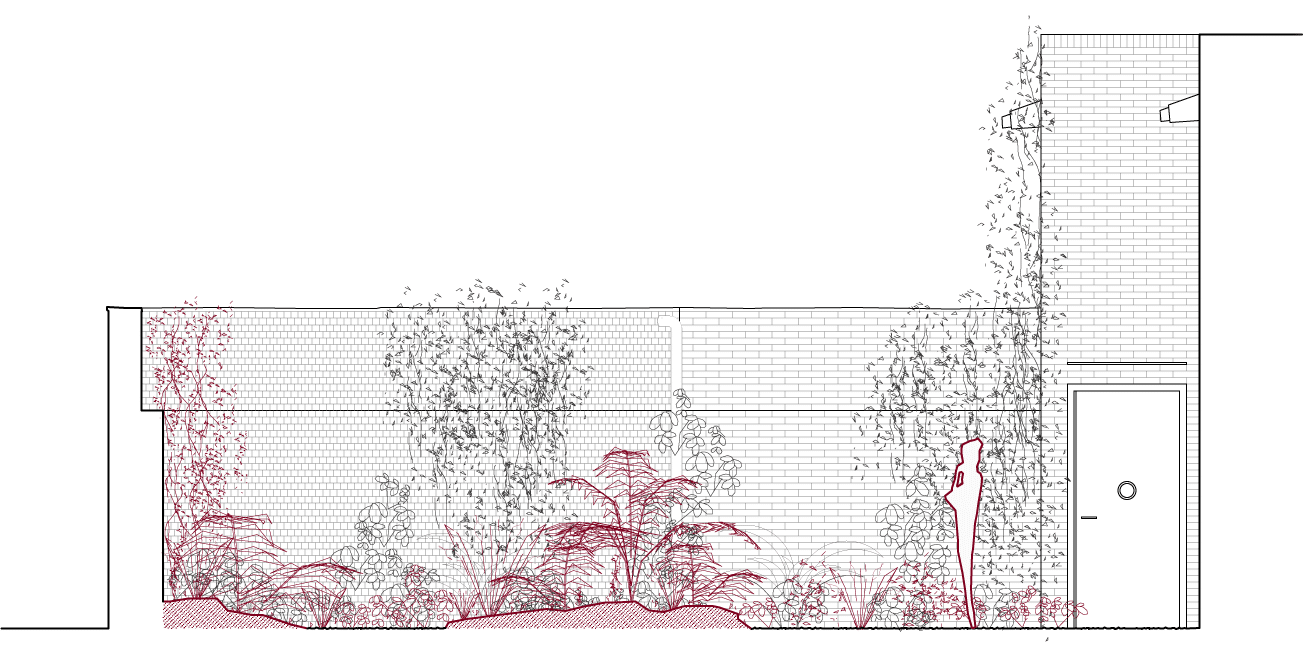
Dec. 2018 onwards:
EL JARDÍN (IN)TEMPORAL
The backyard will be abandoned again until the next Biennale. With this renewed energy, and the introduction of new annual and perennial species, the backyard will be able to thrive and reprogram itself over time.
Take action: become a part of the garden
take a seed ball
Choose your spot in the garden and place the seedball there
Shape this collective space with your individual action
The sowing technique
Nendo dango seedballs
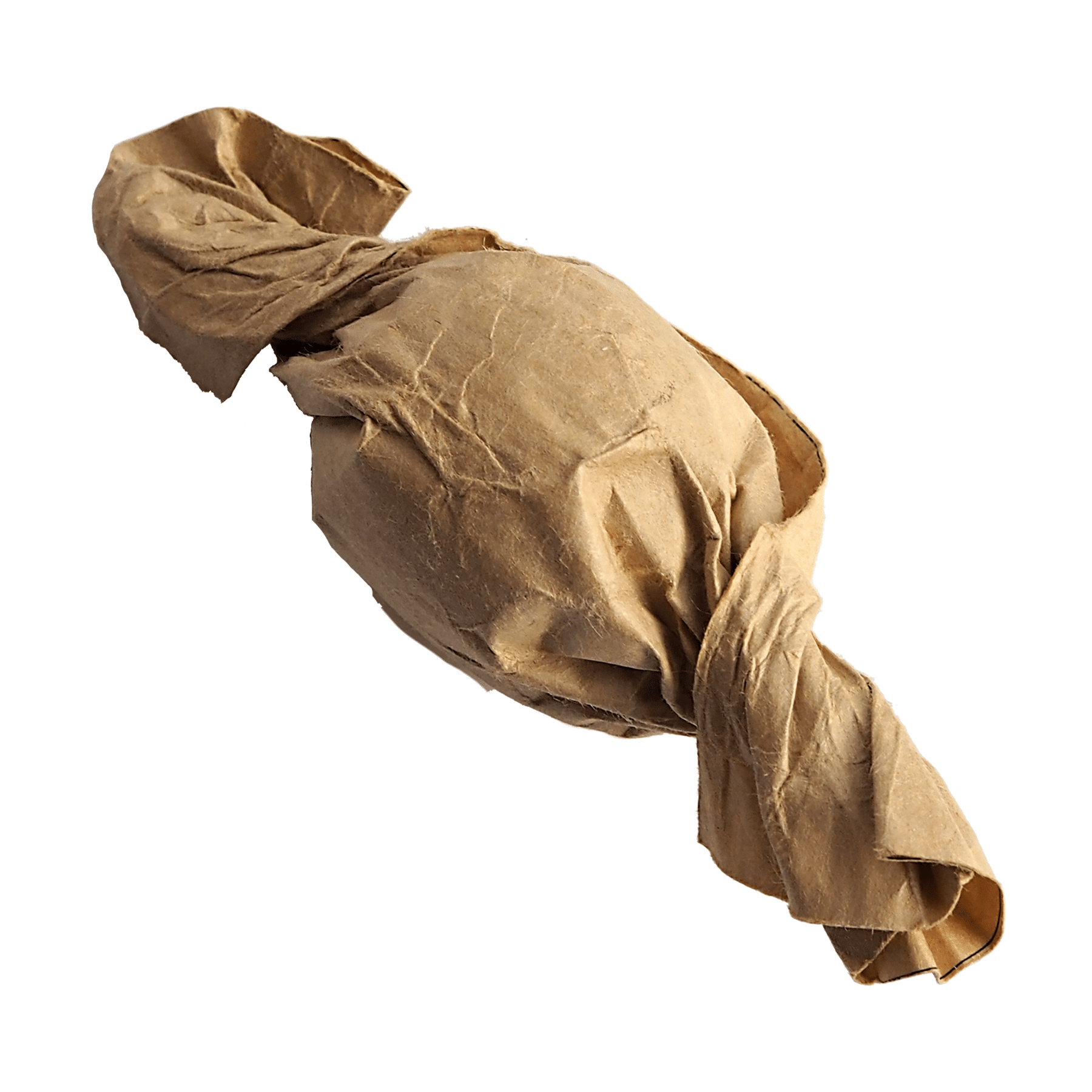
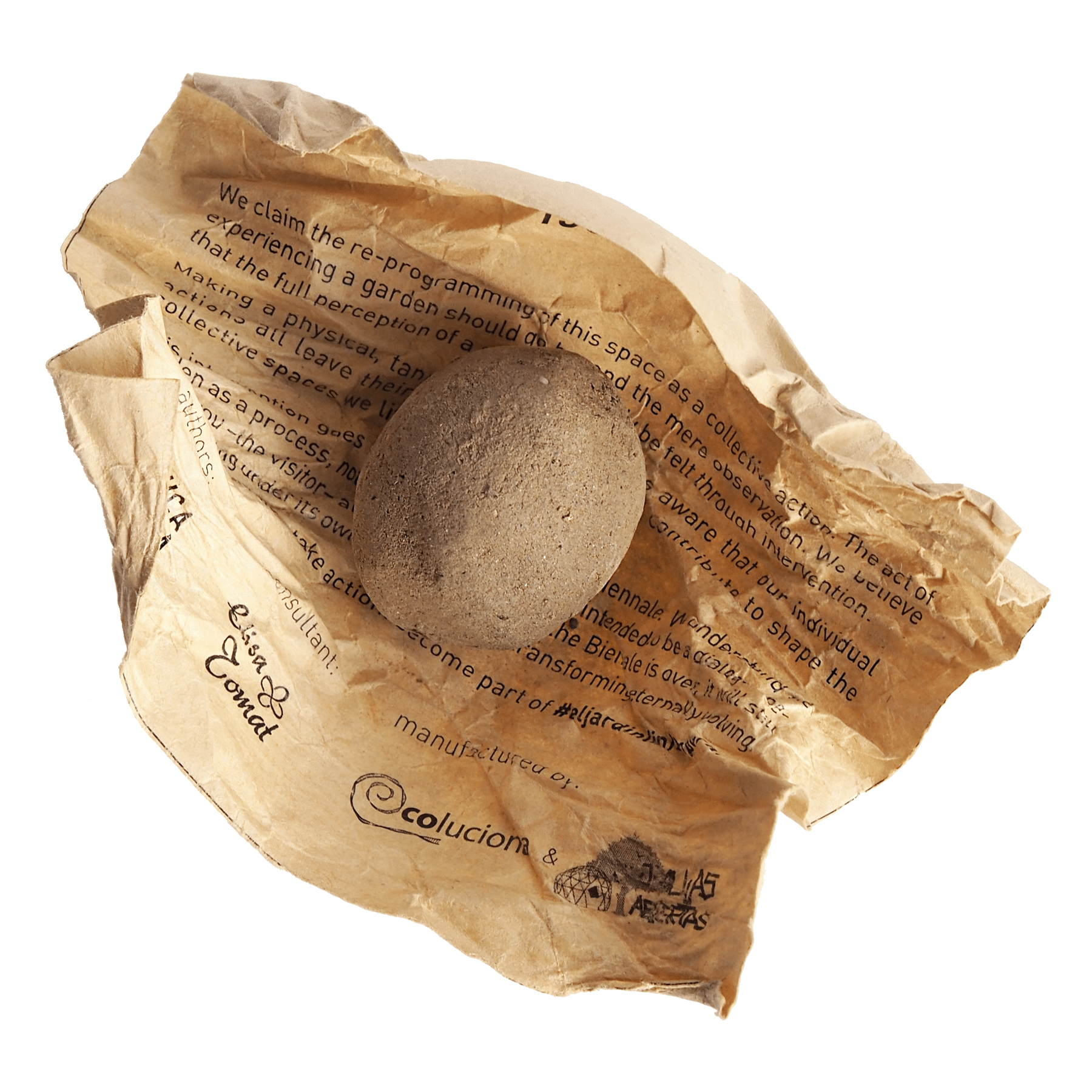
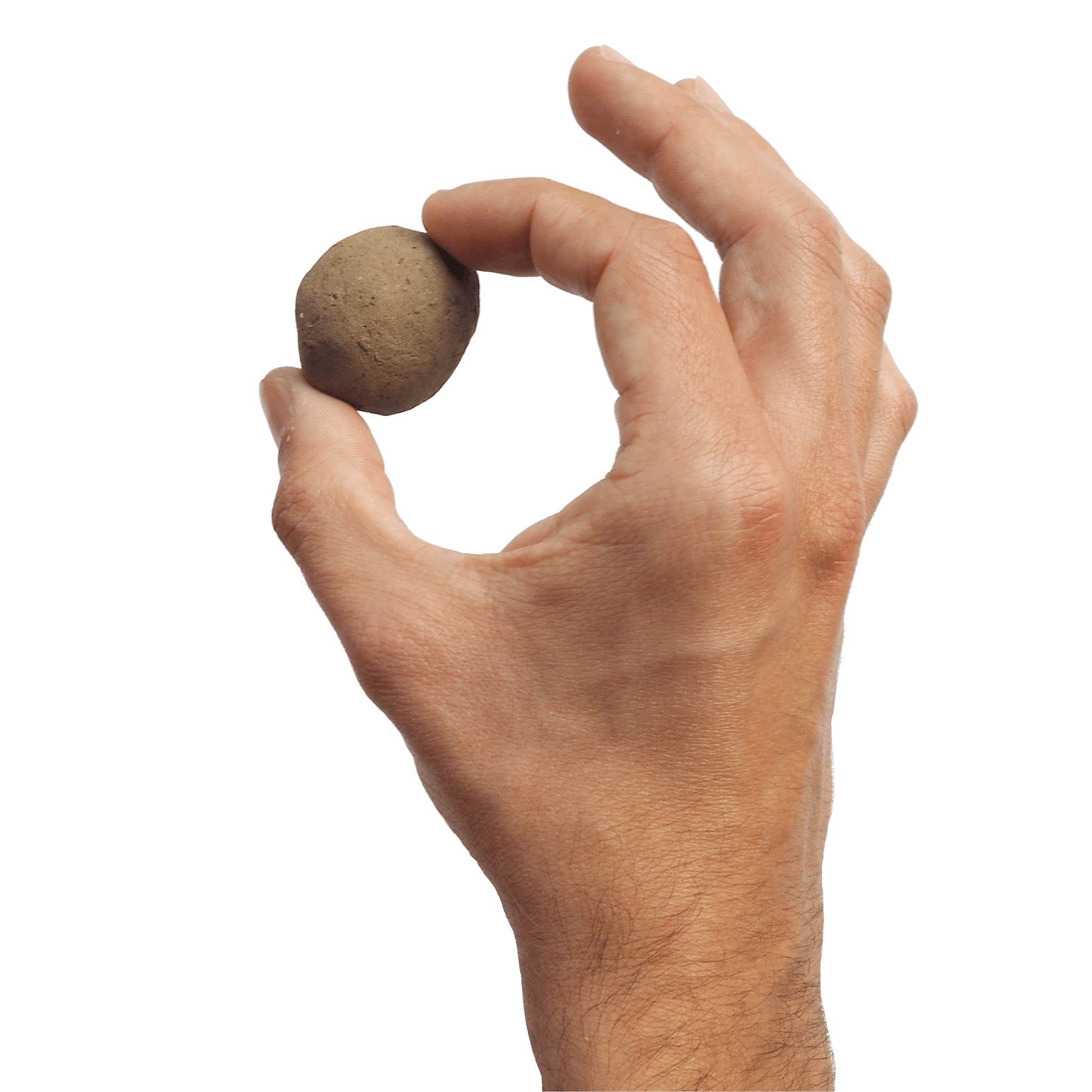
This technique was initially developed by the Japanese microbiologist Masanobu Fukuoka. The seedballs are made by mixing clay, organic fertiliser and selected seeds. They are a very effective method for reforestation. One of their main advantages is that they don’t need to be buried. The clay, which protects the seeds from birds and insects, will eventually melt with the first strong rain, allowing the plants to grow.
40 parts of Clay
10 parts of Worm humus
1 part of Selected seeds
Selection of species
A wide range of wild annuals & perennials
Biological cycle
Average height
Average spread
Colour and temporality of the flowering
Structural interest
Attraction of beneficial insects
Self-seeding capacity
The selection of species comprises a wide range of wild perennials, as well as some annual and biennial plants. The list of species was crafted following the recommendations of the agronomist Elisa Tomat, whose insight was key to ensure the viability of the proposal.
Environmental factors such as sunlighting conditions, water requirements or soil type were carefully taken into consideration. In addition to this, many other more specific characteristics were also crucial. The mural above –also present physically in the Spanish Pavilion– synthesises all this information.
We believe a garden is much more than the ephemeral periods in which the plants are blooming in beautiful colours. A garden can be fascinating all year long, if we are capable of appreciating the subtle shifts in texture, the colour of the foliage changing in the fall, or the almost ethereal shapes of the dry seedheads in winter.
Process of making
Stage 1: Reset

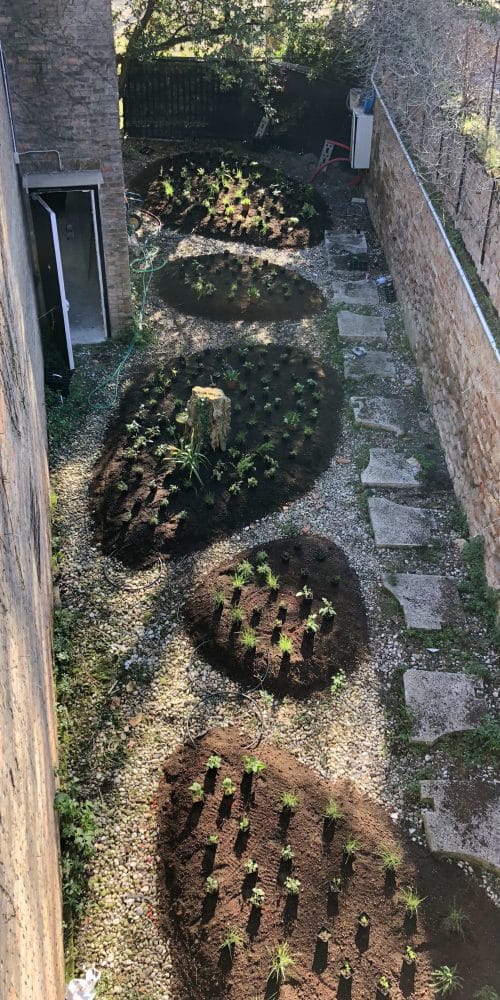
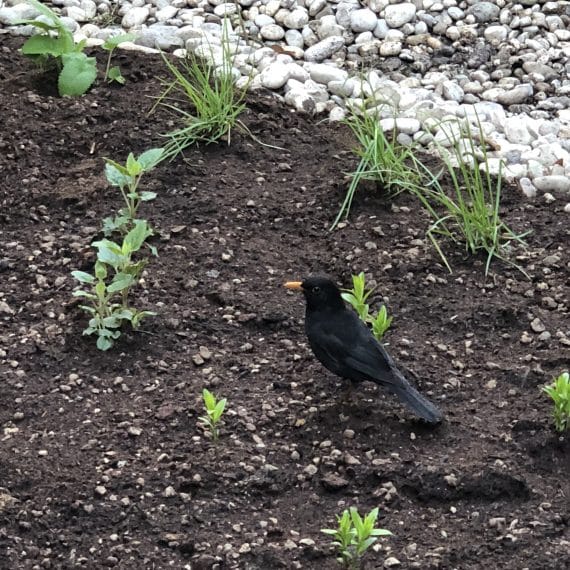
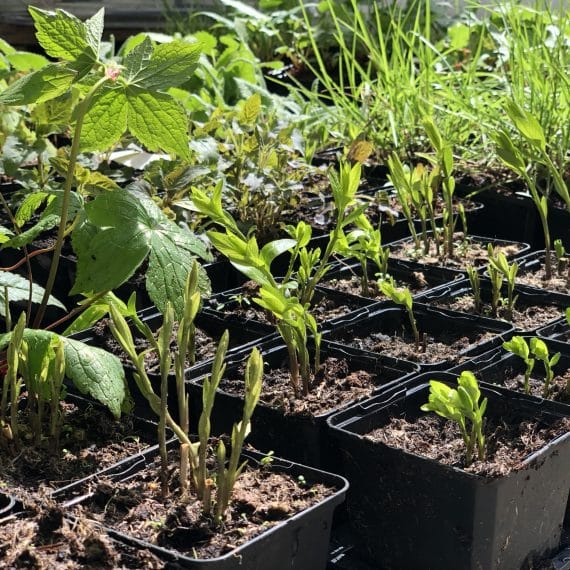
Crafting the seedballs
Workshop by Ecoluciona & J-aulas abiertas
